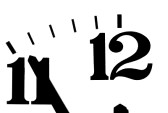Beijing to Shanghai vs. Chicago to New York - 4 Hours, 48 Minutes
similar population densities along the similar length routes
30 Jun 2011, Midwest High Speed Rail Association
At 3:00 PM on Thursday, the first revenue train departed Shanghai on the much anticipated high-speed rail line to Beijing, connecting the political and business centers of the country. The line is expected to have a transformative impact on China's economy, population mobility, and over-crowded transportation system. Shanghai - Beijing is comparable to Chicago - New York.
The new Beijing to Shanghai route will offer a mix of express and local trains totaling an expected 90 trains a day in each direction. The fastest trains make the trip in 4 hours 48 minutes. Imagine traveling from Chicago to New York City in that time! (It currently takes 5 hours to get from Chicago's Loop to Manhattan by air today, IF everything goes right at two delay-prone airports and on two very congested highsways.)
Below is an interesting comparison of the Beijing - Shanghai route and a hypothetical Chicago - New York high-speed route.
(Please Note: We used the existing railroad mileage between Chicago and New York; a high-speed line would likely be much shorter.)
Beijing-Shanghai high-speed railway stations serviced and their county-level city or district populations. Then, consider a midwest-northeast (Chicago to New York + branches) high-speed railway potential stations and their consolidated metropolitan area populations:
Beijing 13.3 million
Langfang 0.7 million
Tianjin 3.8 million
Cangzhou 0.5 million
Dezhou 0.4 million
Jinan 2 million
Taishan 0.6 million
Qufu 0.1 million
Zaozhuang 0.5 million
Xuzhou 1.8 million
Suzhou 0.2 million
Bengbu 1.1 million
Chuzhou 0.1 million
Nanjing 3 million
Zhenjiang 0.6 million
Changzhou 1 million
Wuxi 1.1 million
Suzhou 1 million
Kunshan 0.7 million
Shanghai 19 million
TOTAL= 51.5 million people
= along 818 miles
(62,958 people per route-mile)
Chicago 9.7 million
Fort Wayne 0.6 million
Toledo 0.7 million
Detroit 5.7 million
Cleveland 2.3 million
Akron-Canton 1.1 million
Youngstown-Warren 0.7 million
Pittsburgh 2.9 million
Altoona 0.1 million
Harrisburg 0.5 million
Baltimore 2.7 million
Washington DC 5.4 million
Philadelphia 5.8 million
New York 22.2 million
TOTAL = 60.4 million people
= along 1,075 miles
(56,186 people per route-mile)

